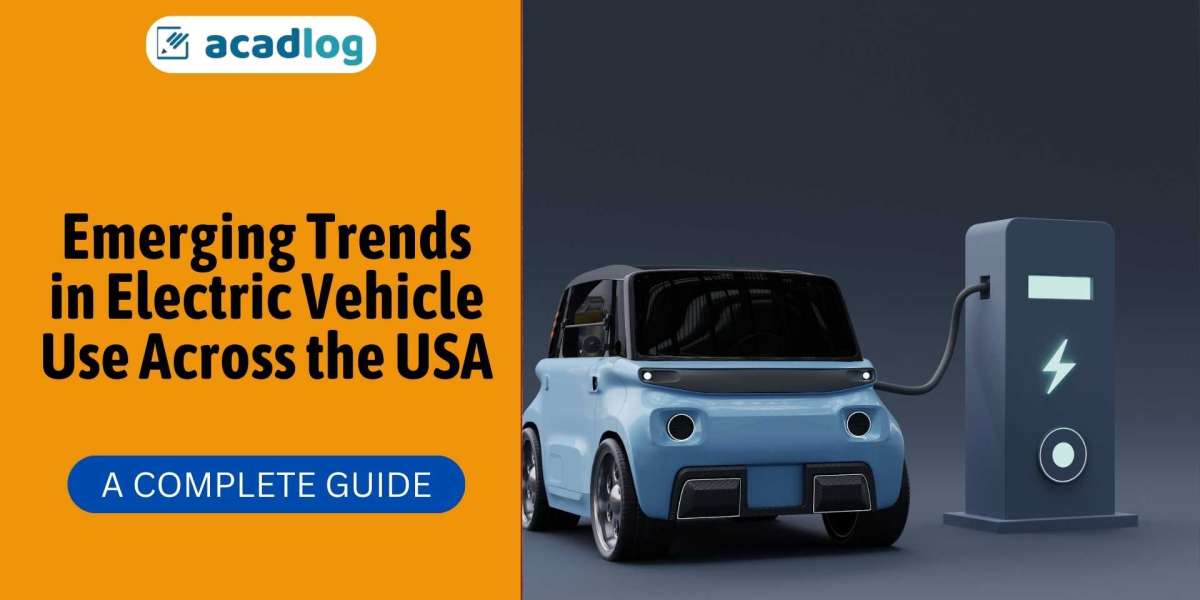Electric vehicles (EVs) have gained significant traction in the United States as a cleaner and more sustainable alternative to traditional gasoline-powered vehicles. As technology advances and infrastructure improves, several emerging trends are shaping the landscape of EV adoption and use across the country. Here are some of the key trends in electric vehicle use across the USA:
1. Increased EV Adoption Rates
One of the most notable trends in the USA is the rapid increase in EV adoption rates. As awareness of climate change and air pollution grows, more consumers are opting for electric vehicles to reduce their carbon footprint and dependence on fossil fuels. Government incentives, such as tax credits and rebates, have also encouraged more Americans to switch to EVs, driving up adoption rates nationwide.
2. Expansion of EV Model Offerings
Automakers are increasingly investing in the development and production of electric vehicles, leading to a wider variety of EV models available to consumers. From compact cars to SUVs and trucks, there is now an EV option to suit a range of preferences and needs. The expansion of EV model offerings is making electric vehicles more accessible and appealing to a broader audience of drivers across the USA.
3. Longer Range and Improved Battery Technology
Advancements in battery technology have led to significant improvements in the range and performance of electric vehicles. Modern EVs can now travel hundreds of miles on a single charge, alleviating concerns about range anxiety and making electric vehicles more practical for everyday use. As battery technology continues to evolve, we can expect further improvements in range, charging speed, and overall efficiency, driving greater adoption of EVs in the USA.
4. Expansion of Charging Infrastructure
The expansion of charging infrastructure is a critical factor in facilitating the widespread adoption of electric vehicles. Across the USA, efforts are underway to install more public charging stations, both fast chargers and Level 2 chargers, in urban areas, along highways, and at workplaces. Additionally, initiatives such as utility-led charging programs and partnerships with private companies are helping to accelerate the growth of charging infrastructure and make EV ownership more convenient and accessible.
5. Transition to Electric Fleets
Businesses, government agencies, and organizations are increasingly electrifying their vehicle fleets as part of efforts to reduce emissions and lower operating costs. From delivery vans and buses to police cruisers and corporate fleets, there is a growing trend toward electrification across various sectors. The transition to electric fleets not only reduces greenhouse gas emissions but also serves as a visible demonstration of the viability and benefits of electric vehicles.
6. Focus on Equity and Accessibility
Efforts to promote equity and accessibility in electric vehicle adoption are gaining traction in the USA. Initiatives such as incentive programs for low-income households, community-based EV education and outreach, and targeted investments in underserved communities are helping to ensure that the benefits of electric vehicles are accessible to all Americans, regardless of income level or geographic location. Addressing barriers to EV adoption, such as upfront costs and charging infrastructure availability, is essential for achieving widespread adoption and maximizing the societal benefits of electric transportation.
7. Integration with Renewable Energy
The integration of electric vehicles with renewable energy sources, such as solar and wind power, is becoming increasingly prevalent. Homeowners and businesses are installing solar panels and using EVs as a means of storing and utilizing excess energy. Electric utilities are also exploring opportunities to incorporate EV charging into their grid management strategies, leveraging renewable energy resources to power electric vehicles and reduce reliance on fossil fuels.
8. Innovation in Mobility Services
Innovations in mobility services, such as ride-sharing, car-sharing, and electric scooter rentals, are contributing to the growing adoption of electric transportation options in urban areas. Companies are incorporating electric vehicles into their fleets of shared mobility vehicles, providing consumers with convenient and sustainable transportation alternatives. Additionally, advancements in autonomous vehicle technology hold the potential to further revolutionize the mobility landscape and accelerate the transition to electric and shared transportation solutions.
Conclusion
The trends shaping electric vehicle use across the USA reflect a growing recognition of the environmental, economic, and societal benefits of electrified transportation. From increased adoption rates and expanded model offerings to improvements in charging infrastructure and innovations in mobility services, electric vehicles are poised to play a central role in the transition to a cleaner, more sustainable transportation future in the United States. By embracing these trends and supporting continued investment and innovation in electric mobility, Americans can pave the way for a greener and more efficient transportation system for generations to come.
Visit How, what and why, NBA queries and Trending times now for more articles like these:


